While they may look similar, people keep asking about the difference between acrylic and gel nails. In recent years, the world of nail care has seen a surge in popularity, with a plethora of options available for those seeking to enhance their nails’ appearance. Two of the most popular options for achieving stunning, long-lasting nails are acrylic nails and gel nails.
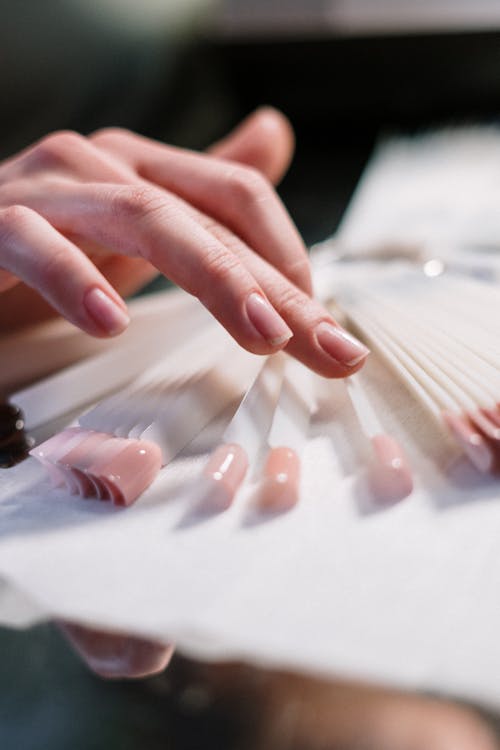
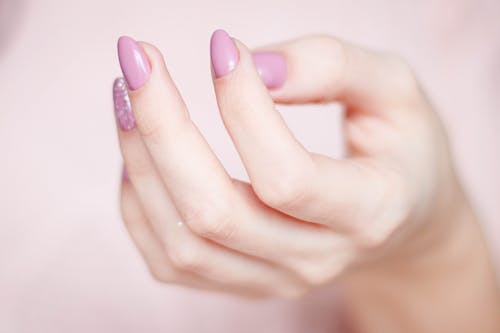
From the application process to the final results, understanding the differences between acrylic and gel nails is crucial for anyone considering getting their nails done. So, whether you’re a seasoned pro or a first-timer, read on to discover everything you need to know about acrylic nails vs. gel nails
Acrylic nails and gel nails can be differentiated based on several factors, including the application process, durability, flexibility, and appearance. They are created by mixing a liquid and powder to form a paste that is applied to the nails and hardened through exposure to air.
Gel nails, on the other hand, are made by applying a liquid gel to the nails that is cured under a UV lamp. When it comes to durability, acrylic nails are known for being more robust and long-lasting than gel nails. However, gel nails are generally more flexible and less prone to chipping.
Appearance-wise, acrylic nails tend to have a more noticeable thickness, while gel nails have a more natural look. These are just some of the ways in which acrylic nails and gel nails differ, and each option has its own set of advantages and disadvantages that should be considered before making a choice.
Article Contents
What are Acrylic Nails?
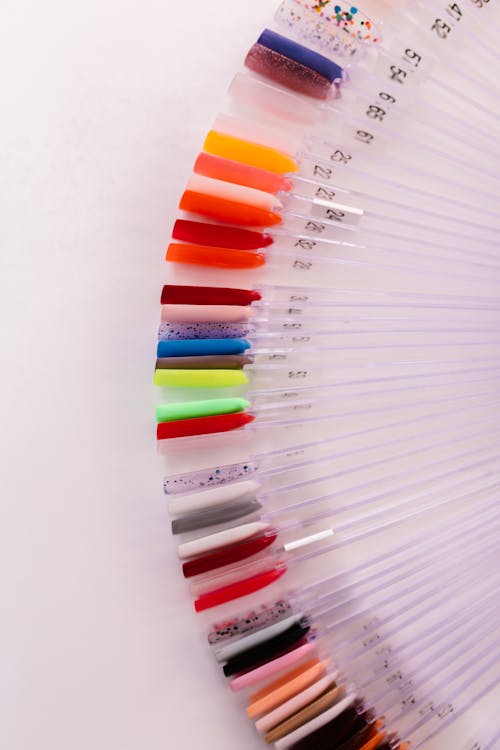

Acrylic nails are a type of artificial nail enhancement made by combining a liquid monomer and a powder polymer to create a thick paste that is applied to the natural nail. The mixture is then sculpted or applied using a brush, allowing it to harden and form a durable and long-lasting extension to the natural nail.
Who Created Acrylic Nails?
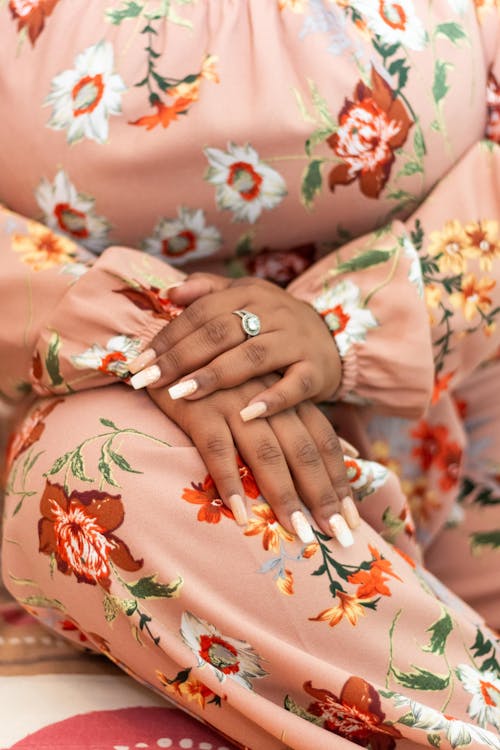
Acrylic nails were first developed in the 1950s by a dentist named Dr. Fred Slack. Dr. Slack wanted to create a more durable and long-lasting material for creating artificial nails, and he discovered that using dental acrylic was an effective solution.
Top benefits of Acrylic nails
Acrylic nails offer a variety of benefits to those who choose to get them. Here are some of the main advantages of acrylic nails:
Customizable: Acrylic nails can be customized to suit individual preferences. They can be shaped, painted, and decorated in a variety of ways, making them a versatile option for anyone who wants to enhance the appearance of their nails. They can be used to create long, dramatic nails or short, natural-looking nails, depending on individual preferences.
Easy to maintain: Unlike natural nails, acrylic nails require minimal maintenance. They don’t chip or peel, and they don’t require regular filing or trimming. All that is needed is regular fills every two to three weeks to keep them looking their best.
Strength: Acrylic nails are strong and can help protect natural nails from damage. They can also be used to repair broken or damaged nails, restoring their strength and shape.
Fast application: The application process for acrylic nails is relatively fast, taking around an hour to complete. This makes them a convenient option for those who don’t have a lot of time to spend in the salon.
Best Features of Acrylic Nails
Acrylic nails have several features that make them a popular and highly sought-after nail enhancement option. Here are some of the top features of acrylic nails:
1. Durability
2. Versatility
3. Strength
4. Customizability
5. Low-maintenance
6. Fast application
7. Natural-looking
Acrylics Pros and Cons
Pros
Durability: Acrylic nails are strong and make a durable nail, and can withstand a lot of wear and tear.
Customizability: Acrylic nails can be customized in a variety of ways to achieve a wide range of looks, lengths, and shapes. nail treatments are affordable to ensure healthy nails, and proper nail growth to the natural nail bed and nail plate.
Versatility: Acrylic nails are suitable for any occasion or outfit, whether it’s a formal event or everyday wear.
Strength: Acrylic nails provide additional strength and protection to the natural long nails, making them less likely to break or chip.
Repairability: Acrylic nails can be used to repair broken or damaged nails, restoring their strength and shape, especially in cases of brittle nails.
Cons
Chemical odor: The chemicals used in the application and removal of acrylic nails can create a strong odor, which can be unpleasant for some people.
Potential damage to natural nails: If acrylic nails are not applied or removed properly, they can damage the natural nails, causing them to become weak, brittle, or discolored.
Maintenance: Acrylic nails require regular maintenance, including filling and shaping every two to three weeks, to maintain their appearance and strength.
Allergic reactions: Some have sensitive skin and may have allergic reactions to the harsh chemicals used in the application due to over-filing and removal of acrylic nails, which can cause skin irritation or allergic reactions.
Cost: Acrylic nails can be more expensive than other nail enhancement options, and the cost can vary depending on several factors, such as the location and complexity of the design.
Acrylic Pricing
The pricing for acrylic nails can vary depending on several factors, including the location, the experience of the nail technician, and the complexity of the design. In general, the average cost of a full set of acrylic nails can range from $30 to $100 or more.
The cost of acrylic nails may also depend on additional services, such as nail art, designs, or French tips. These services may come at an additional cost, which can add up to the overall price of the service.
It’s important to note that while a lower price may be more affordable, it’s important to choose a reputable salon or technician who uses high-quality products and follows proper sanitation practices. This can help ensure the safety and quality of the service and help prevent any potential risks or damages to the natural nails.
What are Gel Nails?

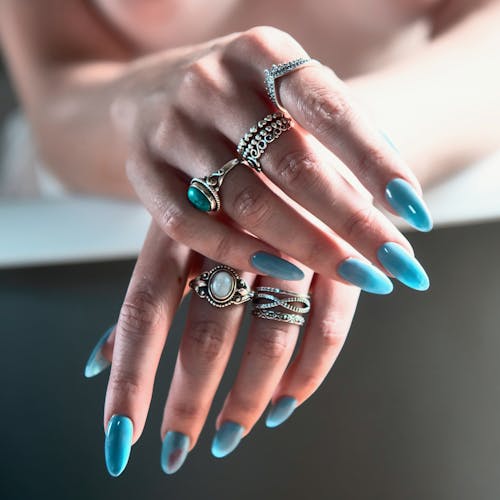
Gel nails are a type of artificial nail enhancement that is applied to natural nails to create a glossy and long-lasting finish. Gel nails are made of a gel-like substance that is cured under a UV or LED light to harden and set.
Gel nails can be applied in a variety of ways, including as a full set of extensions, overlays on natural nails, or as a coating on top of other nail enhancements. They are available in a range of colors, finishes, and designs, making them a popular choice for anyone looking to enhance the appearance of their nails. the gel is applied from the base coat to the builder and then the top coat. Soft gel and hard gel are the two types of gel. the hard gel nails are tough to make gel extensions as fake nails.
Gel nails are typically thinner and more flexible than acrylic nails, and they tend to look more natural. They also require less maintenance than acrylic nails, as they don’t need to be filled as often. A good gel manicure considers the health of the natural nail bed by the nail tech while adding the gel nail polish at the nail salon, especially at the base coat process in getting a nail extension.
Who Created Gel Nails?
The exact origins of gel nails are not clear, as several individuals and companies have claimed to have invented or popularized the use of gel nails. However, the use of gel-like substances for nail enhancements is believed to have originated in the early 1980s.
One early innovator of gel nails was a dentist named Dr. Stuart Nordstrom. In the early 1980s, Dr. Nordstrom developed a type of dental acrylic that was also suitable for use on nails. This material was later modified and developed into a gel-like substance that could be used to create nail enhancements.
Another early innovator of gel nails was a Japanese company called IBD (International Beauty Design). In the 1990s, IBD introduced a line of gel nail products that became popular in the United States and other countries.
Since then, gel nail technology has continued to evolve and improve, with new products and techniques being developed to create longer-lasting, more natural-looking, and more versatile nail enhancements. Today, gel nails are a popular option for anyone looking to enhance the appearance of their nails.
Top benefits of Gel nails

One of the top benefits of gel nails is their long-lasting durability. Gel nails are designed to be strong and flexible, and they can withstand a lot of wear and tear without chipping, peeling, or fading. Unlike traditional nail polish, which can chip or peel after just a few days, gel nails can last for up to two or three weeks without needing to be touched up or redone. This makes them a popular option for anyone looking for a low-maintenance and long-lasting nail enhancement.
Additionally, gel nails are available in a wide range of colors, finishes, and designs, making them a versatile and customizable option for anyone looking to enhance the appearance of their nails.
Best Features of Gel Nails
Some of the best features of gel nails include:
Durability: Gel nails are known for their strength and durability, making them a long-lasting option for anyone looking to enhance the appearance of their nails.
Natural-looking finish: Gel nails have a natural-looking finish that mimics the appearance of real nails. They are thinner and more flexible than acrylic nails, giving them a more natural look and feel.
Versatility: Gel nails are available in a wide range of colors, finishes, and designs, making them a versatile option for anyone looking to customize their nail enhancement.
Low maintenance: Gel nails require less maintenance than acrylic nails, as they don’t need to be filled as often and can last for up to two or three weeks without needing to be touched up with regular nail polish.
Quick and easy application: Gel nails can be applied quickly and easily using a UV or LED light to cure the gel. This makes them a popular option for anyone looking for a fast and convenient nail enhancement solution.
Gel Pricing
The cost of gel nails varies depending on several factors, including the location, salon, and type of service you choose. On average, the cost of a gel manicure can range from $35 to $60, with some salons charging more for additional services such as nail art or nail extensions.
If you choose to do gel nails at home, the cost will depend on the price of the gel nail kit and any additional tools or supplies you may need. Gel nail kits can range from $20 to $100, depending on the brand and the contents of the kit.
Gel nails Pros and Cons
Pros
Durability: Gel nails are known for their strength and durability, making them a long-lasting option.
Natural-looking finish: Gel nails have a natural-looking finish that mimics the appearance of real nails.
Versatility: Gel nails are available in a wide range of colors, finishes, and designs, making them a versatile option for customization.
Low maintenance: Gel nails require less maintenance than other types of nail enhancements, as they don’t need to be filled as often and can last for up to two weeks or three weeks.
Quick application: Gel nails can be applied quickly and easily using a UV or LED light to cure the gel.
Cons
Cost: Gel nails tend to be more expensive than traditional nail polish.
Removal process: The removal process for gel nails can be time-consuming and can potentially damage your nails if not done correctly.
UV exposure: The curing process for gel nails involves exposure to UV light, which can potentially be harmful to your skin.
Limited nail repair options: Unlike acrylic nails, gel nails cannot be repaired if they break or chip and must be removed and replaced entirely.
Potential for nail damage: If gel nails are not applied or removed correctly, they can potentially damage your natural nails.
Spot The Untold Differences between gel and acrylic nails
While acrylics and gels share many similarities, there are some key differences between the two types of nail enhancements
- gel nails are made of a gel-like substance that hardens when exposed to UV light unlike Acrylics made of a mixture of acrylic liquid form and powder that hardens when air dried.
- Acrylics are typically applied using a brush to apply the liquid and powder mixture, while gel nails are applied using a brush to apply the gel and then cured under a UV light.
- gel nail polish dries faster than acrylic which typically takes longer to dry and harden
- Acrylics typically take longer to dry and harden than gel nails, which can be cured in just a few minutes under a UV or LED light.
- Acrylics tend to be thicker and bulkier than gel nails, which are thinner and more flexible.
- Acrylics require more frequent maintenance and filling than gel nails, which can last for up to two or three weeks without needing to be touched up.
- gels have a more glossy appearance or glossy finish in gel manicures vs acrylic nails as reviewed by nail technicians in the beauty industry as one of the main differences between them
- The removal process for acrylics involves soaking the nails in acetone, while the removal process for gel nails involves filing off the top coat of the gel and then soaking the nails in acetone. Acrylics can be repaired if they break or chip, while gel nails cannot be repaired and must be removed and replaced entirely.
Case Study: [Results Achieved With Product]
Reviews have shown that both gel or acrylic nails come out beautiful and make the hand gorgeous nails, improving natural appearance when properly applied.

